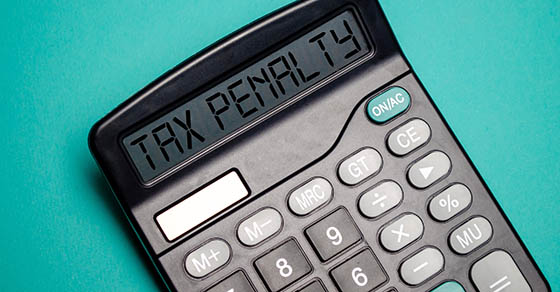Weekly Tax Brief
Corporate officers or shareholders: How should you treat expenses paid personally?
- Details
- Published: 18 July 2023 18 July 2023

If you play a major role in a closely held corporation, you may sometimes spend money on corporate expenses personally. These costs may end up being nondeductible both by an officer and the corporation unless the correct steps are taken. This issue is more likely to happen with a financially troubled corporation.
What can’t you deduct?
In general, you can’t deduct an expense you incur on behalf of your corporation, even if it’s a legitimate “trade or business” expense and even if the corporation is financially troubled. This is because a taxpayer can only deduct expenses that are his own. And since your corporation’s legal existence as a separate entity must be respected, the corporation’s costs aren’t yours and thus can’t be deducted even if you pay them.
To make matters worse, the corporation won’t generally be able to deduct them either because it didn’t pay them itself. Accordingly, be advised that it shouldn’t be a practice of your corporation’s officers or major shareholders to cover corporate costs.
What expenses may be deductible?
On the other hand, if a corporate executive incurs costs that relate to an essential part of his or her duties as an executive, they may be deductible as ordinary and necessary expenses related to his or her “trade or business” of being an executive. If you wish to set up an arrangement providing payments to you and safeguarding their deductibility, a provision should be included in your employment contract with the corporation stating the types of expenses which are part of your duties and authorizing you to incur them. For example, you may be authorized to attend out-of-town business conferences on the corporation’s behalf at your personal expense.
What’s the best alternative?
Alternatively, to avoid the complete loss of any deductions by both yourself and the corporation, an arrangement should be in place under which the corporation reimburses you for the expenses you incur. Turn the receipts over to the corporation and use an expense reimbursement claim form or system. This will at least allow the corporation to deduct the amount of the reimbursement.
Contact us if you’d like assistance or would like to discuss these issues further.
© 2023
Inheriting stock or other assets? You’ll receive a favorable “stepped-up basis”
- Details
- Published: 14 July 2023 14 July 2023

If you’re planning your estate, or you’ve recently inherited assets, you may be unsure of the “cost” (or “basis”) for tax purposes.
How do the rules work?
Under the current fair market value basis rules (also known as the “step-up and step-down” rules), an heir receives a basis in inherited property equal to its date-of-death value. So, for example, if your grandfather bought stock in 1940 for $600 and it’s worth $1 million at his death, the basis is stepped up to $1 million in the hands of your grandfather’s heirs — and all of that gain escapes federal income tax.
The fair market value basis rules apply to inherited property that’s includible in the deceased’s gross estate, and those rules also apply to property inherited from foreign persons who aren’t subject to U.S. estate tax. It doesn’t matter if a federal estate tax return is filed. The rules apply to the inherited portion of property owned by the inheriting taxpayer jointly with the deceased, but not the portion of jointly held property that the inheriting taxpayer owned before his or her inheritance. The fair market value basis rules also don’t apply to reinvestments of estate assets by fiduciaries.
What if assets are given before death?
It’s crucial to understand the current fair market value basis rules so that you don’t pay more tax than you’re legally required to.
For example, in the above example, if your grandfather decides to make a gift of the stock during his lifetime (rather than passing it on when he dies), the “step-up” in basis (from $600 to $1 million) would be lost. Property that has gone up in value acquired by gift is subject to the “carryover” basis rules. That means the person receiving the gift takes the same basis the donor had in it ($600 in this example), plus a portion of any gift tax the donor pays on the gift.
A “step-down” occurs if someone dies owning property that has declined in value. In that case, the basis is lowered to the date-of-death value. Proper planning calls for seeking to avoid this loss of basis. Giving the property away before death won’t preserve the basis. That’s because when property that has gone down in value is the subject of a gift, the person receiving the gift must take the date of gift value as his basis (for purposes of determining his or her loss on a later sale). Therefore, a good strategy for property that has declined in value is for the owner to sell it before death so he or she can enjoy the tax benefits of the loss.
Need help with estate planning and taxes?
These are the basic rules. Other rules and limits may apply. For example, in some cases, a deceased person’s executor may be able to make an alternate valuation election. Contact us for tax assistance when estate planning and taxes as they relate to inheritances.
© 2023
Use an S corporation to mitigate federal employment tax bills
- Details
- Published: 13 July 2023 13 July 2023

If you own an unincorporated small business, you probably don’t like the size of your self-employment (SE) tax bills. No wonder!
For 2023, the SE tax is imposed at the painfully high rate of 15.3% on the first $160,200 of net SE income. This includes 12.4% for Social Security tax and 2.9% for Medicare tax. The $160,200 Social Security tax ceiling is up from the $147,000 ceiling for 2022, and it’s only going to get worse in future years, thanks to inflation. Above the Social Security tax ceiling, the Medicare tax component of the SE tax continues at a 2.9% rate before increasing to 3.8% at higher levels of net SE income thanks to the 0.9% additional Medicare tax, on all income.
The S corp advantage
For wages paid in 2023 to an S corporation employee, including an employee who also happens to be a shareholder, the FICA tax wage withholding rate is 7.65% on the first $160,200 of wages: 6.2% for Social Security tax and 1.45% for Medicare tax. Above $160,200, the FICA tax wage withholding rate drops to 1.45% because the Social Security tax component is no longer imposed. But the 1.45% Medicare tax wage withholding hits compensation no matter how much you earn, and the rate increases to 2.35% at higher compensation levels thanks to the 0.9% additional Medicare tax.
An S corporation employer makes matching payments except for the 0.9% Additional Medicare tax, which only falls on the employee. Therefore, the combined employee and employer FICA tax rate for the Social Security tax is 12.4%, and the combined rate for the Medicare tax is 2.9%, increasing to 3.8% at higher compensation levels — same as the corresponding SE tax rates.
Note: In this article, we’ll refer to the Social Security and Medicare taxes collectively as federal employment taxes whether paid as SE tax for self-employed folks or FICA tax for employees.
Strategy: Become an S corporation
While wages paid to an S corporation shareholder-employee get hit with federal employment taxes, any remaining S corp taxable income that’s passed through to the employee-shareholder is exempt from federal employment taxes. The same is true for cash distributions paid out to a shareholder-employee. Since passed-through S corporation taxable income increases the tax basis of a shareholder-employee’s stock, distributions of corporate cash flow are usually free from federal income tax.
In appropriate circumstances, an S corp can follow the tax-saving strategy of paying modest, but justifiable, salaries to shareholder-employees. At the same time, it can pay out most or all of the remaining corporate cash flow in the form of federal-employment-tax-free shareholder distributions. In contrast, an owner’s share of net taxable income from a sole proprietorship, partnership and LLC (treated as a partnership for tax purposes) is generally subject to the full ravages of the SE tax.
Potential negative side effect
Running your business as an S corporation and paying modest salaries to the shareholder-employee(s) may mean reduced capacity to make deductible contributions to tax-favored retirement accounts. For example, if an S corporation maintains a SEP, the maximum annual deductible contribution for a shareholder-employee is limited to 25% of salary. So the lower the salary, the lower the maximum contribution. However, if the S corp sets up a 401(k) plan, paying modest salaries generally won’t preclude generous contributions.
Other implications
Converting an unincorporated business into an S corporation has other legal and tax implications. It’s a big decision. We can explain all the issues.
© 2023
That email or text from the IRS: It’s a scam!
- Details
- Published: 06 July 2023 06 July 2023

“Thousands of people have lost millions of dollars and their personal information to tax scams,” according to the IRS. The scams may come in through email, text messages, telephone calls or regular mail. Criminals regularly target both individuals and businesses and often prey on the elderly.
Important: The IRS will never contact you by email, text or social media channels about a tax bill or refund. Most IRS contacts are first made through regular mail. So if you get a text message saying it’s the IRS and asking for your Social Security number, it’s someone trying to steal your identity and rob you. Remember that the IRS already has your Social Security number.
“Scammers are coming up with new ways all the time to try to steal information from taxpayers,” said IRS Commissioner Danny Werfel. “People should be wary and avoid sharing sensitive personal data over the phone, email or social media to avoid getting caught up in these scams.”
Here are some of the crimes the IRS has identified in recent months:
Email messages and texts that infect recipients’ computers and phones. In this scam, a phony email claims to come from the IRS. The subject line of the email often states that the message is a notice of underreported income or a refund. There may be an attachment or a link to a bogus web page with your “tax statement.” When you open the attachment or click on the link, a Trojan horse virus is downloaded to your computer.
The trojan horse is an example of malicious code (also known as malware) that can take over your computer hard drive, giving someone remote access to the computer. It may also look for passwords and other information. The scammer will then use whatever information is gathered to commit identity theft, gain access to bank accounts and more.
Phishing and spear phishing messages. Emails or text messages that are designed to get users to provide personal information are called phishing. Spear phishing is a tailored phishing attempt sent to a specific organization or business department.
For example, one spear phishing scam targets employees who work in payroll departments. These employees might get an email that looks like it comes from an official source, such as the company CEO, requesting W-2 forms for all employees. The payroll employees might erroneously reply with these documents, which then provides criminals with personal information about the staff that can be used to commit fraud.
The IRS recommends using a two-person review process if you receive a request for W-2s. In addition, employers should require any requests for payroll to be submitted through an official process, like the employer’s human resources portal.
Scams keep evolving
These are only a few examples of the types of tax scams circulating. Be on guard for any suspicious messages. Don’t open attachments or click on links. Contact us if you get an email about a tax return we prepared. You can also report suspicious emails that claim to come from the IRS at This email address is being protected from spambots. You need JavaScript enabled to view it.. Those who believe they may already be victims of identity theft should find out what do by going to the Federal Trade Commission’s website, OnGuardOnLine.gov.
© 2023
Jury awards more than $22 million in back pay to manufacturing employees
- Details
- Published: 05 July 2023 05 July 2023

The U.S. Department of Labor (DOL) recently announced that a jury in a landmark case, Walsh v. East Penn Manufacturing Co, Inc., DC-PA, has awarded more than $22 million in back wages to about 7,500 employees of a battery manufacturer. The award marks the largest recorded verdict ever under the Fair Labor Standards Act (FLSA). Further, the DOL, which brought the lawsuit, plans to request an equal amount in liquidated damages and an injunction requiring future FLSA compliance by the manufacturer.
The jury found that the manufacturer was required to pay affected workers for all of their working time — including the actual additional time needed to put on and remove protective equipment and to shower to avoid the dangers of lead exposure and other hazards — resulting in overtime violations. This case should act as a wakeup call for all manufacturers to pay close attention to FLSA rules and regulations concerning tracking time and pay.
FLSA pay regs explained
Under the FLSA, employees must be paid an overtime rate of one and a half times their regular pay rate for time worked above 40 hours a week, unless specific exemptions exist. FLSA exemptions exclude certain executives, administrative and professional (EAP) employees; outside salespeople; and computer employees from the federal overtime rules.
What constitutes hours worked under the FLSA? “Workday,” in general, means the period between the time on any particular day when employees commence their “principal activities” and the time at which they cease such activities. Principal activities are those that employees are employed to perform, such as the work manufacturing employees perform during their shift on the manufacturing floor — and those hours must be compensated.
But employees must also be compensated for all activities that are essential to performing their principal activities, even if the activities are performed before employees begin, or after they end, their principal work activities. The workday may, therefore, be longer than employees’ scheduled shift, hours, tour of duty, or production line time.
For example, if employees in a chemical plant cannot perform their principal activities without putting on certain clothes, then changing clothes on the employer’s premises at the beginning and end of the workday would be essential to performing their principal activities. The time spent changing clothes would be part of the workday and must be compensated.
Facts of the case
The manufacturer, one of the largest battery producers in the world, maintained two sets of time records for its employees. The first was based on a card-scanning system requiring employees to swipe in no more than 14 minutes before a shift and no more than 14 minutes after a shift. The other set of “adjusted” records didn’t reflect the 14-minute rule before and after shifts.
The manufacturer paid its employees based on the adjusted time records, without taking the 14-minute rule into account, even though it was aware that more time was needed for pre- and post-shift activities. In response to an employee’s complaint, the employer adjusted its policy, providing a five-minute grace period before a shift to change into uniforms and additional time for cleaning up after a shift when approved by a manager. Also, the employer granted employees 10 minutes for shower time after their shifts.
The parties didn’t dispute that the activities before and after employees’ 8-hour shifts were “integral and indispensable.” However, they disagreed about the measuring stick used for this compensable time.
The key difference between the parties: The DOL argued that the employer should record the actual time it takes for workers to put on and take off their protective uniforms. Conversely, the employer asserted that it’s required to pay employees only for the “reasonable time” to complete those tasks and that the 15 minutes for pre-shift activity and 10 minutes for post-shift activity is sufficient.
In the end, the manufacturer couldn’t persuade the court. The court confirmed that the appropriate method for measuring compensable time is based on the continuous workday rule, whereby employees are compensated for all time spent during the continuous workday. The court saw no binding legal precedence for using a “reasonable” amount of time.
Moreover, the court indicated that the “reasonable” time standard was used only for calculating back-pay damages and not for regular pay. So, it agreed with the DOL’s position that compensation should be based on the actual time spent on the activities — not a “reasonable” amount of time.
Besides siding with the employees on overtime pay, the court found that the manufacturer violated FLSA recordkeeping provisions. Reason: The manufacturer openly admitted it didn’t record the actual time spent on pre- and post-shift activities.
Learn from others’ mistakes
This case is a cautionary tale for manufacturing companies in similar circumstances. Be sure to accurately track work hours of employees according to the FLSA and other prevailing laws and regulations — and to pay them for the tracked time.
© 2023
The Trust Fund Recovery Penalty: Who can it be personally assessed against?
- Details
- Published: 27 June 2023 27 June 2023

If you own or manage a business with employees, there’s a harsh tax penalty that you could be at risk for paying personally. The Trust Fund Recovery Penalty (TFRP) applies to Social Security and income taxes that are withheld by a business from its employees’ wages.
Sweeping penalty
The TFRP is dangerous because it applies to a broad range of actions and to a wide range of people involved in a business.
Here are some answers to questions about the penalty:
What actions are penalized? The TFRP applies to any willful failure to collect, or truthfully account for, and pay over taxes required to be withheld from employees’ wages.
Why is it so harsh? Taxes are considered the government’s property. The IRS explains that Social Security and income taxes “are called trust fund taxes because you actually hold the employee’s money in trust until you make a federal tax deposit in that amount.”
The penalty is sometimes called the “100% penalty” because the person found liable is personally penalized 100% of the taxes due. The amounts the IRS seeks are usually substantial and the IRS is aggressive in enforcing the penalty.
Who’s at risk? The penalty can be imposed on anyone “responsible” for collecting and paying tax. This has been broadly defined to include a corporation’s officers, directors and shareholders, a partnership’s partners and any employee with related duties. In some circumstances, voluntary board members of tax-exempt organizations have been subject to this penalty. In other cases, responsibility has been extended to professional advisors and family members close to the business.
According to the IRS, responsibility is a matter of status, duty and authority. Anyone with the power to see that taxes are (or aren’t) paid may be responsible. There’s often more than one responsible person in a business, but each is at risk for the entire penalty. You may not be directly involved with the payroll tax withholding process in your business. But if you learn of a failure to pay withheld taxes and have the power to pay them, you become a responsible person. Although taxpayers held liable can sue other responsible people for contribution, this action must be taken entirely on their own after the TFRP is paid.
What’s considered willful? There doesn’t have to be an overt intent to evade taxes. Simply paying bills or obtaining supplies instead of paying over withheld taxes is willful behavior. And just because you delegate responsibilities to someone else doesn’t necessarily mean you’re off the hook. Failing to do the job yourself can be treated as willful.
Recent cases
Here are two cases that illustrate the risks.
- A U.S. Appeals Court held a hospital administrator liable for the TFRP. The administrator was responsible for payroll, as well as signing and reviewing checks. She also knew that the financially troubled hospital wasn’t paying withheld taxes to the IRS. Instead of prioritizing paying taxes, she paid vendors and employees’ wages. (Cashaw, CA 5, 5/31/23)
- A corporation owner’s daughter/corporate officer was assessed a $680,472 TFRP for unpaid payroll taxes. She argued that she wasn’t a responsible party. She owned no stock and couldn’t hire and fire employees. But she did have the power to write checks and pay vendors and was aware of the unpaid taxes. A U.S. Appeals Court found the “great weight of evidence” indicated she was a responsible party and the TFRP was upheld. (Scott, CA 11, 10/31/22)
Best advice
Under no circumstances should you “borrow” from withheld amounts. All funds withheld should be paid over to the government on time. Contact us with any questions.
© 2023
Are you married and not earning compensation? You may be able to put money in an IRA
- Details
- Published: 22 June 2023 22 June 2023

When one spouse in a married couple is not earning compensation, the couple may not be able to save as much as they need for a comfortable retirement. In general, an IRA contribution is allowed only if a taxpayer earns compensation. However, there’s an exception involving a “spousal” IRA. It allows contributions to be made for a spouse who is out of work or who stays home to care for children, elderly parents or for other reasons, as long as the couple files a joint tax return.
For 2023, the amount that an eligible married couple can contribute to an IRA for a nonworking spouse is $6,500, which is the same limit that applies for the working spouse.
Benefits of an IRA
As you may know, IRAs offer two advantages for taxpayers who make contributions to them:
- Contributions of up to $6,500 a year to a traditional IRA may be tax deductible, and
- The earnings on funds within the IRA aren’t taxed until withdrawn. (Alternatively, you may make contributions to a Roth IRA. There’s no deduction for Roth IRA contributions, but, if certain requirements are met, future distributions are tax-free.)
As long as a married couple has a combined earned income of at least $13,000, $6,500 can be contributed to an IRA for each spouse, for a total of $13,000. (The contributions for both spouses can be made to either a regular IRA or a Roth IRA, or split between them, as long as the combined contributions don’t exceed the $13,000 limit.)
Higher contribution if 50 or older
In addition, individuals who are age 50 or older can make “catch-up” contributions to an IRA or Roth IRA in the amount of $1,000. Therefore, for 2023, a taxpayer and his or her spouse, who have both reached age 50 by the end of the year can each make a deductible contribution to an IRA of up to $7,500, for a combined deductible limit of $15,000.
However, there are some limitations. If, in 2023, the working spouse is an active participant in one of several types of retirement plans, a deductible contribution of up to $6,500 (or $7,500 for a spouse who will be 50 by the end of the year) can be made to the IRA of the nonparticipant spouse only if the couple’s AGI doesn’t exceed a certain threshold. This limit is phased out for AGI between $218,000 and $228,000.
If you’d like more information about IRAs or want to discuss retirement planning, contact us.
© 2023
2023 Q3 tax calendar: Key deadlines for businesses and other employers
- Details
- Published: 19 June 2023 19 June 2023

Here are some of the key tax-related deadlines affecting businesses and other employers during the third quarter of 2023. Keep in mind that this list isn’t all-inclusive, so there may be additional deadlines that apply to you. Contact us to ensure you’re meeting all applicable deadlines and to learn more about the filing requirements.
July 31
- Report income tax withholding and FICA taxes for second quarter 2023 (Form 941) and pay any tax due. (See the exception below, under “August 10.”)
- File a 2022 calendar-year retirement plan report (Form 5500 or Form 5500-EZ) or request an extension.
August 10
- Report income tax withholding and FICA taxes for second quarter 2023 (Form 941), if you deposited on time and in full all of the associated taxes due.
September 15
- If a calendar-year C corporation, pay the third installment of 2023 estimated income taxes.
- If a calendar-year S corporation or partnership that filed an automatic six-month extension:
- File a 2022 income tax return (Form 1120-S, Form 1065 or Form 1065-B) and pay any tax, interest and penalties due.
- Make contributions for 2022 to certain employer-sponsored retirement plans.
© 2023
Reduce the impact of the 3.8% net investment income tax
- Details
- Published: 08 June 2023 08 June 2023

High-income taxpayers face a regular income tax rate of 35% or 37%. And they may also have to pay a 3.8% net investment income tax (NIIT) that’s imposed in addition to regular income tax. Fortunately, there are some ways you may be able to reduce its impact.
Affected taxpayers
The NIIT applies to you only if modified adjusted gross income (MAGI) exceeds:
- $250,000 for married taxpayers filing jointly and surviving spouses,
- $125,000 for married taxpayers filing separately,
- $200,000 for unmarried taxpayers and heads of household.
The amount subject to the tax is the lesser of your net investment income or the amount by which your MAGI exceeds the threshold ($250,000, $200,000, or $125,000) that applies to you.
Net investment income includes interest, dividend, annuity, royalty and rental income, unless those items were derived in the ordinary course of an active trade or business. In addition, other gross income from a trade or business that’s a passive activity is subject to the NIIT, as is income from a business trading in financial instruments or commodities.
There are many types of income that are exempt from the NIIT. For example, tax-exempt interest and the excluded gain from the sale of your main home aren’t subject to the tax. Distributions from qualified retirement plans aren’t subject to the NIIT. Neither are Social Security benefits. Wages and self-employment income also aren’t subject to the NIIT, though they may be subject to a different Medicare surtax.
It’s important to remember the NIIT applies only if you have net investment income and your MAGI exceeds the applicable thresholds above. But by following strategies, you may be able to minimize your net investment income.
Shifting investments
If your income is high enough to trigger the NIIT, shifting some income investments to tax-exempt bonds could result in less exposure to the tax. Tax-exempt bonds lower your MAGI and avoid the NIIT.
Dividend-paying stocks are taxed more heavily as a result of the NIIT. The maximum income tax rate on qualified dividends is 20%, but the rate becomes 23.8% with the NIIT.
As a result, you may want to consider rebalancing your investment portfolio to emphasize growth stocks over dividend-paying stocks. While the capital gains from these investments will be included in net investment income, there are two potential benefits: 1) the tax will be deferred because the capital gains won’t be subject to the NIIT until the stocks are sold, and 2) capital gains can be offset by capital losses, which isn’t the case with dividends.
Retirement plan distributions
Because distributions from qualified retirement plans are exempt from the NIIT, upper-income taxpayers with some control over their situations (such as small business owners) might want to make greater use of qualified plans.
These are only a couple of strategies you may be able to employ. You also may be able to make moves related to charitable donations, passive activities and rental income that may allow you to minimize the NIIT. If you’re subject to the tax, you should include it in your tax planning. Contact us for strategies in your situation.
© 2023
Traveling for business this summer? Here’s what you can deduct
- Details
- Published: 06 June 2023 06 June 2023

If you and your employees are traveling for business this summer, there are a number of considerations to keep in mind. Under tax law, in order to claim deductions, you must meet certain requirements for out-of-town business travel within the United States. The rules apply if the business conducted reasonably requires an overnight stay.
Note: Under the Tax Cuts and Jobs Act, employees can’t deduct their unreimbursed travel expenses on their own tax returns through 2025. That’s because unreimbursed employee business expenses are “miscellaneous itemized deductions” that aren’t deductible through 2025.
However, self-employed individuals can continue to deduct business expenses, including away-from-home travel expenses.
Rules that come into play
The actual costs of travel (for example, plane fare and cabs to the airport) are deductible for out-of-town business trips. You’re also allowed to deduct the cost of meals and lodging. Your meals are deductible even if they’re not connected to a business conversation or other business function. Although there was a temporary 100% deduction in 2021 and 2022 for business food and beverages provided by a restaurant, it was not extended to 2023. Therefore, there’s once again a 50% limit on deducting eligible business meals this year.
Keep in mind that no deduction is allowed for meal or lodging expenses that are “lavish or extravagant,” a term that’s been interpreted to mean “unreasonable.”
Personal entertainment costs on the trip aren’t deductible, but business-related costs such as those for dry cleaning, phone calls and computer rentals can be written off.
Mixing business with pleasure
Some allocations may be required if the trip is a combined business/pleasure trip, for example, if you fly to a location for four days of business meetings and stay on for an additional three days of vacation. Only the costs of meals, lodging, etc., incurred for the business days are deductible — not those incurred for the personal vacation days.
On the other hand, with respect to the cost of the travel itself (plane fare, etc.), if the trip is primarily business, the travel cost can be deducted in its entirety and no allocation is required. Conversely, if the trip is primarily personal, none of the travel costs are deductible. An important factor in determining if the trip is primarily business or personal is the amount of time spent on each (although this isn’t the sole factor).
If the trip doesn’t involve the actual conduct of business but is for the purpose of attending a convention, seminar, etc., the IRS may check the nature of the meetings carefully to make sure it isn’t a vacation in disguise. Retain all material helpful in establishing the business or professional nature of this travel.
Other expenses
The rules for deducting the costs of a spouse who accompanies you on a business trip are very restrictive. No deduction is allowed unless the spouse is an employee of you or your company, and the spouse’s travel is also for a business purpose.
Finally, note that personal expenses you incur at home as a result of taking the trip aren’t deductible. For example, let’s say you have to board a pet while you’re away. The cost isn’t deductible. Contact us if you have questions about your small business deductions.
© 2023





